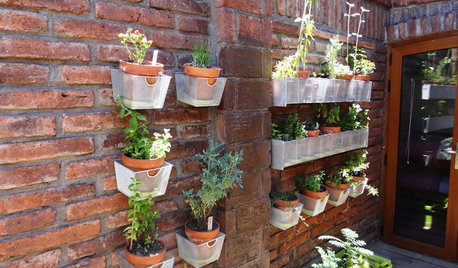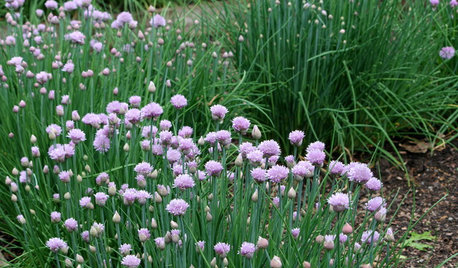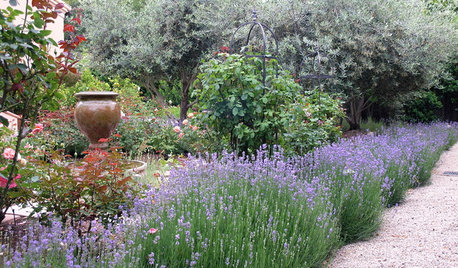growing basil in containers: Al's mix
tetrazzini
9 years ago
Related Stories

SUMMER GARDENINGHow to Grow Basil
Bright color, quick growth and endless uses for cooking make this summer annual a winner in the garden or a pot
Full Story
FARM YOUR YARDHow to Grow Vegetables in Containers
Get glorious vegetables and fruits on your patio with a pro’s guidance — including his personal recipe for potting mix
Full Story
CONTAINER GARDENS8 Easy Container Plants to Grow From Seed
Get beautiful blooms and herbs in summer by starting these choice garden picks from seed in spring
Full Story
FARM YOUR YARD10 Easy Edibles to Grow in Containers
These herbs, vegetables and fruits are just as happy in a pot as they are in the ground
Full Story
EDIBLE GARDENSHouzz Call: Where Are the Craziest Places You Grow Edibles?
Basil in a bathtub, spinach stacked up a wall ... If your edibles occupy an odd spot, we’d like to know
Full Story
FARM YOUR YARD6 Things to Know Before You Start Growing Your Own Food
It takes time and practice, but growing edibles in the suburbs or city is possible with smart prep and patience
Full Story
SUMMER FRUITS AND VEGETABLESSummer Crops: How to Grow Beans
Grow your own beans for amazing variety and healthy, convenient produce all summer
Full Story
HERBSHerb Garden Essentials: How to Grow Chives
This decorative and delicately flavored herb from the onion family is easy to grow indoors and out
Full Story
FLOWERSHerb Garden Essentials: Grow Your Own Fragrant Lavender
This do-it-all plant is ideal for almost any garden, and its uses are abundant around the home
Full Story
EDIBLE GARDENSSummer Crops: How to Grow Tomatoes
Plant tomato seedlings in spring for one of the best tastes of summer, fresh from your backyard
Full StoryMore Discussions








tetrazziniOriginal Author
seysonn
Related Professionals
Mooresville Landscape Contractors · Alamo Landscape Contractors · Camp Verde Landscape Contractors · Haverhill Landscape Contractors · Nashua Landscape Contractors · Carson Solar Energy Systems · Moorpark Solar Energy Systems · Shelton Solar Energy Systems · Swansea Solar Energy Systems · Wichita Window Contractors · Watsonville Window Contractors · Madison Fence Contractors · Green Valley Fence Contractors · Millbrae Fence Contractors · Winchester Fence ContractorsOhiofem 6a/5b Southwest Ohio
tetrazziniOriginal Author
Rickster88
NewContainerGrower
seysonn
Ohiofem 6a/5b Southwest Ohio
tetrazziniOriginal Author
Ohiofem 6a/5b Southwest Ohio
tetrazziniOriginal Author
DMForcier
hairmetal4ever
Rickster88
drew51 SE MI Z5b/6a